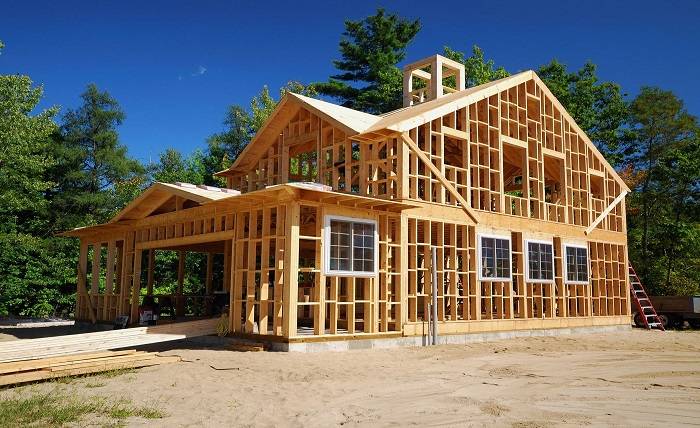In our reviews, we talked about modern country houses. These publications aroused the increased interest of our readers, but at the same time they also gave rise to many questions. From all this sea of questions we chosetwo of the most exciting of our readers and decided to answer them in today’s review.
We present the materials of this conversation to your attention today. Inna Vitalyivna, our readers are very interested in the issue of relationships between clients and construction firms, because properly organized and established relationships are a guarantee of successful construction. Of course, readers, as potential customers, are more concerned about what they can demand from the contractor company and what it is obliged to do for them. But rights and responsibilities are a mutual thing, so let’s tell the readers of our magazine about the rights and responsibilities of clients of a construction firm on the one hand and the rights and responsibilities of a construction firm that fulfills the order of the same client on the other hand. All work must be carried out on the basis of a construction contract. Such a contract precisely regulates the mutual rights and obligations of the client (hereafter, let’s call him the “Customer”, as in the contract) and the construction company that executes the order (hereafter, we will call it the “Executor”, as in the contract ). A correctly drawn up contract is a guarantee and will be a legal guarantee of normal relations between the “Customer” and the “Contractor” before, during and after the completion of construction. The Contractor “before, during and after the completion of construction. The Contractor “before, during and after the completion of construction .
Before starting to draw up a contract, the “Customer” must decide which house he wants. Each company usually offers many house projects and you need to choose at least approximately the exterior of the house, its dimensions and basic interior layout. Based on this initial data, you can already make an offer and at least roughly determine the value of the house. Having made such calculations, you can already look together with the “Customer” – what to add, what to remove in order to balance needs with opportunities.
Next, a construction contract is concluded. This document is also necessary from the point of view of current legislation. Design and estimate documentation is attached to it as an appendix. This is a very important question, because this is exactly the documentation by which the client will receive the materials he paid for. It is through it that you can check whether everything was delivered to him from what he paid. The project is a working drawing with all the details. They are necessary for the client, first of all, because they can be used to check whether what was built corresponds to what should be according to the project.
Why is a construction contract still necessary?
It has many clauses that protect the rights of both the “Customer” and the “Executor”. For example, there is a clause according to which the “Executor” is obliged to warn the “Customer” about all surprises that have come to light during the construction process. For example, if during the construction it turns out that the foundation has hit a “floater” or a high-voltage cable passes too close, etc. Or if the “Customer” during the work makes such changes that may be dangerous for the operation of the building and the customer’s life, we are also obliged to warn him about this. And it is even better to convince that it is not possible to do so. Even if the “Customer” is just going to install a stove in the house, he is obliged to coordinate this issue with our designers. After all, at the same time, sometimes not only the roof itself breaks through, but also battens and even floor beams.
A technical task is also attached to the contract, which gives a complete description of the object under construction, including the smallest nuances: the height of the ceilings, the thickness of the insulation layer, what kind of ceiling, how the walls are sheathed, what additional work needs to be done, etc. When drawing up this document, the “Customer” must provide a description of the location of the site itself and a description of the soil on the construction site. If the “Customer” can give such a description, then a specialist must go to the place to help him do it. The technical task is a document sealed on both sides with signatures, which is necessary so that the “Customer” and the “Executor” do not have disagreements regarding the performance of certain works in the future.
When specialists visit the “Customer” site, they draw up a road map with the construction worker, and also tie the future building to the site (pegs are driven in). This document is then also attached to the contract to avoid further disagreements. Otherwise, the “Customer” can later state that he asked for the facade of the building (siding kansas city) to be turned in a completely different direction, etc. (Many questions during the preparation of this document force the “Customer” to think over and calculate everything again and again. They force him to think even about those questions that he had never thought about before, believing that each of them has an obvious solution. And think once more , agree, it is useful, because you are not investing in a house for a year or two, but for a long time. – V.K.)
When compiling all this documentation, the “Customer” should read it very carefully, and if something is unclear, then ask for clarification. And only then put your signature under the document. It should be noted that in order to avoid further disagreements, “serious” companies usually record all agreed issues on paper, preventing any verbal agreements. It is useful and convenient for both the “Customer” and the “Executor”.
Having decided on an architectural project and drawing up an estimate, you can start construction. Let’s consider the most popular turnkey house construction option, when the team does all the work, starting with laying the foundation and ending with finishing. In this version, there are five stages: conclusion of the contract, foundation, rafter system, windows and delivery of the object. Each of these five stages ends with the drawing up of an acceptance certificate and payment for this stage of work. For example, the foundation is ready, the client should inspect it, express his comments or claims. At the same time, he has the right to delay the payment of money for the stage until the claims and comments are eliminated (of course, if they are specific and justified). The “executor” on the other hand, according to the current Civil Code,
Such a system is also convenient for the “Executive” – we do not proceed to the next stage until we have completed the previous one, but when we have completed the stage, we can be firmly sure that we have really completed it and there will be no complaints at the final handover to this stage . Each of the stages appears in the same way. By mutual agreement of the parties, the order of stages can be changed. The reason for this can be, for example, small interruptions in the supply of materials in the summer period, or some difficulties with the “Customer”.










